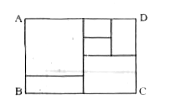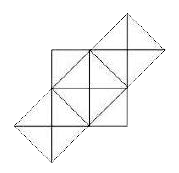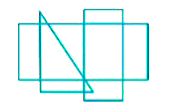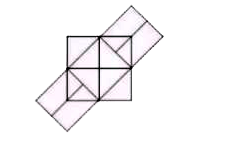The following figure has a network of rectangles. Two rows and three columns.

(A) Totally how many rectangles are there in the figure?
(B) If there are x rectangles in each row and y rectangles in each column, totally how many rectangles will be there in the network, in terms of x and y.
The correct Answer is:x(x+1)2×y(y+1)2
Step by step video, text & image solution for The following figure has a network of rectangles. Two rows and three columns. (A) Totally how many rectangles are there in the figure? (B) If there are x rectangles in each row and y rectangles in each column, totally how many rectangles will be there in the network, in terms of x and y. by Maths experts to help you in doubts & scoring excellent marks in Class 8 exams.
Topper's Solved these Questions
- BOOK - PEARSON IIT JEE FOUNDATIONCHAPTER - FormulaeEXERCISE - Very Short Type Question20videos
Formulae
- BOOK - PEARSON IIT JEE FOUNDATIONCHAPTER - FormulaeEXERCISE - Short Answer Type Question25videos
Formulae
- BOOK - PEARSON IIT JEE FOUNDATIONCHAPTER - GEOMETRY EXERCISE - CONCEPT APPLICATION (Level 1)60videos
GEOMETRY
Similar Questions
The following figure has a network of rectangles. Two rows and three columns.

(A) Totally how many rectangles are there in the figure?
(B) If there are x rectangles in each row and y rectangles in each column, totally how many rectangles will be there in the network, in terms of x and y.View SolutionHow many rectangles are there in the figure ABCD ?
 View Solution
View Solution
Knowledge Check
- Question 1 - Select One
How many rectangles are there in given figure
 A6B7C9D10
A6B7C9D10 - Question 2 - Select One
How many rectangles are there in the given figure?
 A15B17C19D23
A15B17C19D23 - Question 3 - Select One
How many rectangles are there in the given figure?
 A13B17C11D15
A13B17C11D15
How many rectangles are there in the given figure
 View Solution
View SolutionHow many rectangles are there in the given figure?
 View Solution
View SolutionHow many rectangles are there in the given figure?
 View Solution
View SolutionHow many rectangles are there in the given figure ?
 View Solution
View SolutionHow many rectangles are there in the given figure ?
 View Solution
View Solution

